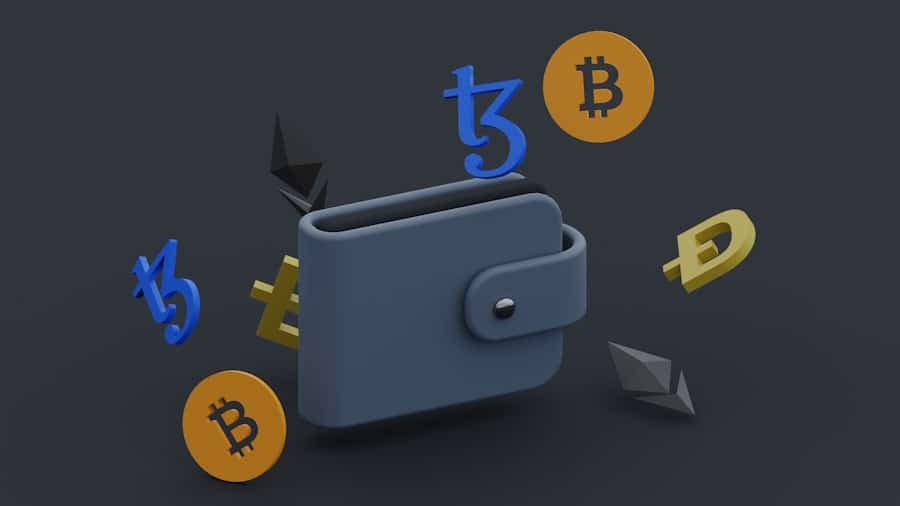Cryptocurrency staking is a process that allows holders of certain cryptocurrencies to participate in the network’s operations while earning rewards in return. This mechanism is primarily associated with proof-of-stake (PoS) and its variants, where users lock up a portion of their cryptocurrency holdings to support the network’s security and transaction validation. Unlike traditional mining, which requires significant computational power and energy consumption, staking is a more environmentally friendly alternative that enables users to contribute to the blockchain’s integrity without the need for specialized hardware.
The concept of staking has gained traction as more cryptocurrencies adopt PoS and its derivatives, such as delegated proof-of-stake (DPoS) and liquid proof-of-stake (LPoS). In these systems, the act of staking not only secures the network but also allows participants to earn passive income through staking rewards. These rewards can come in various forms, including additional tokens or transaction fees, making staking an attractive option for those looking to grow their cryptocurrency holdings over time.
Key Takeaways
- Cryptocurrency staking is the process of actively participating in transaction validation on a proof-of-stake (PoS) blockchain network.
- Staking works by users locking up a certain amount of cryptocurrency to participate in block validation and earn rewards.
- When choosing a cryptocurrency for staking, consider factors such as the project’s credibility, staking rewards, and the technology behind the network.
- Setting up a staking wallet involves choosing a secure wallet that supports staking, transferring the desired amount of cryptocurrency, and following the staking instructions provided by the network.
- Staking rewards and returns can vary based on factors such as the amount of cryptocurrency staked, the length of time staked, and the overall network participation.
How Does Cryptocurrency Staking Work?
At its core, cryptocurrency staking involves locking up a certain amount of cryptocurrency in a wallet to support the operations of a blockchain network. When a user stakes their coins, they are essentially participating in the consensus mechanism that validates transactions and secures the network. In PoS systems, validators are chosen to create new blocks based on the number of coins they hold and are willing to stake.
This selection process can vary depending on the specific protocol, but it generally favors those who have staked larger amounts. Once a user has staked their cryptocurrency, they become eligible to receive rewards for their participation.
The frequency and amount of rewards can vary significantly between different cryptocurrencies and depend on factors such as the total amount staked within the network and the individual’s stake size. Some networks also implement mechanisms to encourage long-term staking, such as increasing rewards for those who lock their assets for extended periods.
Choosing the Right Cryptocurrency for Staking

Selecting the right cryptocurrency for staking is crucial for maximizing potential returns and minimizing risks. Several factors should be considered when making this decision. First, it is essential to evaluate the underlying technology and use case of the cryptocurrency.
A project with a strong development team, a clear roadmap, and real-world applications is more likely to succeed in the long term, which can positively impact the value of staked assets. Another important consideration is the staking rewards offered by different cryptocurrencies. Some projects provide higher annual percentage yields (APY) than others, which can significantly influence potential earnings.
However, higher rewards often come with increased risk, so it is vital to strike a balance between potential returns and the stability of the underlying asset. Additionally, understanding the lock-up periods and withdrawal policies associated with staking is essential, as some cryptocurrencies may require users to lock their funds for extended periods before they can access them again.
Setting Up a Staking Wallet
To begin staking cryptocurrencies, users must first set up a compatible wallet that supports staking functionalities. There are several types of wallets available, including hardware wallets, software wallets, and web-based wallets. Hardware wallets are often considered the most secure option, as they store private keys offline, reducing the risk of hacking or theft.
Popular hardware wallets like Ledger and Trezor support various cryptocurrencies that offer staking capabilities. Once a wallet is selected, users need to ensure that it is properly configured for staking. This may involve downloading specific software or applications that facilitate staking operations.
For instance, some cryptocurrencies require users to run a full node or participate in a validator pool to stake effectively. It is also essential to keep the wallet software updated to benefit from security patches and new features that may enhance the staking experience.
Understanding Staking Rewards and Returns
Staking rewards can vary widely depending on several factors, including the specific cryptocurrency being staked, the total amount staked within the network, and individual participation levels. Generally, rewards are distributed based on a percentage of the total staked amount, with higher stakes often leading to higher rewards. For example, if a cryptocurrency offers an APY of 10% and a user stakes 1,000 tokens, they could potentially earn 100 tokens over a year.
In addition to fixed rewards, some networks also distribute transaction fees as part of their staking rewards. This means that as more transactions occur on the network, stakers can benefit from increased earnings. However, it is important to note that staking rewards are not guaranteed and can fluctuate based on network conditions and changes in protocol governance.
Therefore, potential stakers should conduct thorough research into how rewards are calculated for each cryptocurrency they consider.
Risks and Considerations of Cryptocurrency Staking

While staking can offer attractive returns, it is not without its risks and considerations. One significant risk is market volatility; the value of staked assets can fluctuate dramatically based on market conditions. If a user stakes a cryptocurrency that experiences a sharp decline in value, their overall returns may be negatively impacted despite earning rewards.
Another risk associated with staking is related to network security and governance issues. If a blockchain network suffers from technical problems or governance disputes, it could affect the ability to earn rewards or even result in losses for stakers. Additionally, some cryptocurrencies impose penalties for early withdrawal or slashing mechanisms that can reduce staked amounts if validators act maliciously or fail to perform their duties correctly.
Therefore, it is crucial for potential stakers to understand these risks fully before committing their assets.
Tips for Successful Cryptocurrency Staking
To maximize success in cryptocurrency staking, several strategies can be employed. First and foremost, diversifying across multiple cryptocurrencies can help mitigate risks associated with market volatility and project-specific issues. By spreading investments across various assets with different reward structures and use cases, stakers can create a more balanced portfolio.
Another important tip is to stay informed about developments within the chosen projects. Following updates from development teams and participating in community discussions can provide valuable insights into potential changes that may affect staking rewards or network stability. Additionally, utilizing tools such as staking calculators can help users estimate potential returns based on different staking scenarios.
Lastly, it is advisable to start with smaller amounts when entering the staking space. This approach allows users to familiarize themselves with the process without exposing themselves to significant financial risk. As confidence grows and understanding deepens, users can gradually increase their stakes in projects they believe have strong long-term potential.
Is Cryptocurrency Staking Right for You?
Determining whether cryptocurrency staking is suitable for an individual depends on various factors including risk tolerance, investment goals, and understanding of blockchain technology. For those seeking passive income opportunities while contributing to network security, staking can be an appealing option. However, it requires careful consideration of market dynamics and project fundamentals.
Ultimately, successful staking involves not only selecting promising cryptocurrencies but also maintaining an informed approach to market trends and technological developments within the blockchain space. By weighing these factors thoughtfully, individuals can make informed decisions about whether to engage in cryptocurrency staking as part of their broader investment strategy.
If you’re interested in exploring more about the digital landscape beyond cryptocurrency staking, you might find the article on Top Trends on YouTube 2023 particularly insightful. This piece delves into the latest developments and emerging trends on one of the most influential platforms in the digital world, offering a broader perspective on how technology and digital content are evolving.
FAQs
What is cryptocurrency staking?
Cryptocurrency staking is the process of actively participating in transaction validation on a proof-of-stake (PoS) blockchain. In staking, users are required to hold a certain amount of coins in a designated wallet to support the network and receive rewards in return.
How does cryptocurrency staking work?
In cryptocurrency staking, users lock up a certain amount of their coins as a stake in a wallet to support the network’s operations. This helps secure the blockchain and validate transactions. In return for their participation, stakers receive rewards in the form of additional coins.
What are the benefits of cryptocurrency staking?
The benefits of cryptocurrency staking include the opportunity to earn passive income through staking rewards, contributing to the security and decentralization of the blockchain network, and potentially gaining voting rights in network governance decisions.
What are the risks of cryptocurrency staking?
Some of the risks associated with cryptocurrency staking include the potential for loss of staked coins due to network attacks or technical issues, the possibility of reduced staking rewards in a competitive staking environment, and the need to carefully choose reliable staking platforms and protocols.
How can I start cryptocurrency staking?
To start cryptocurrency staking, you will need to choose a suitable PoS cryptocurrency, acquire the required amount of coins for staking, set up a staking wallet, and delegate your coins to a staking pool or validator. It’s important to research and understand the specific staking requirements and rewards for each cryptocurrency.

